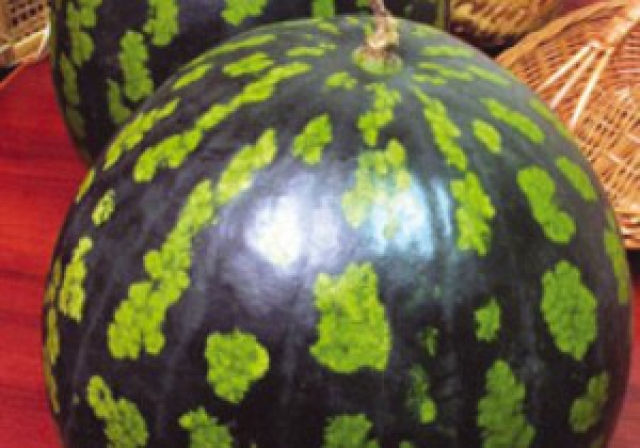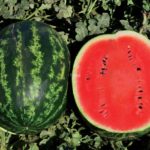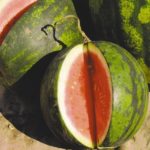Many gardeners probably more than once had to get upset about the unsuccessful cultivation of watermelons in their plots. Enjoy the taste of ripe juicy berries turn out, given the advice of experts and experienced gardeners. In this article, we will look at the question of whether watermelons can be planted at home, how difficult it is to care for them, and how often it is necessary to fertilize and feed them to get an excellent harvest.
Table of contents
- Is it possible to grow watermelons at home in the country in the open field?
- The most popular varieties of watermelon for planting in Russia, Ukraine and Belarus
- Rules of planting plants in open ground
- How to care after landing on the site?
- How to grow melon in the garden: the main mistakes
- Pests and problems of growing watermelons
- Proper harvest
Is it possible to grow watermelons at home in the country in the open field?
Growing a watermelon in your own garden is not as difficult as it may seem. In the open field at the cottage landing occurs in several ways:
- seed;
- rassadnym.
The technology of sowing directly on the bed is used mainly in the warm regions of the country. As soon as the soil warms up to + 12 ° С, the preparation of seeds for planting begins. In more severe climatic conditions, without preliminary cultivation of seedlings is indispensable. In the opposite case, the berries tied on the stem do not have time to ripen before the end of the summer.
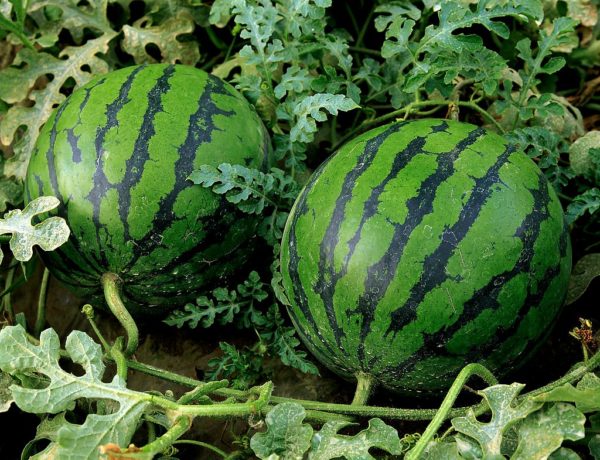
Before planting, you need to sort the seed by size, removing the damaged and affected seeds.Calibration (sorting) provides for the division into groups according to dimensional characteristics in order to ensure uniform growth of shoots. In the opposite case, stronger sprouts will not allow small ones to develop.
There is another preparatory procedure used by gardeners in the middle lane. This scarification, the essence of which lies in the intentional damage to the surface of the seed to stimulate growth. It is enough to rub the nose on the sandpaper fines. In this case, the main thing - do not overdo it.
Mandatory step is the heating of seed material. For this, it is kept in a thermos with hot water (+ 50 ° C) for about half an hour. Due to temperature effects, all biochemical processes are accelerated.
Disinfection is considered an integral part of the preparation. The material is aged in a weak solution of potassium permanganate for about 20 minutes. After that, it will remain to dry it under natural conditions (do not use an oven or a battery).
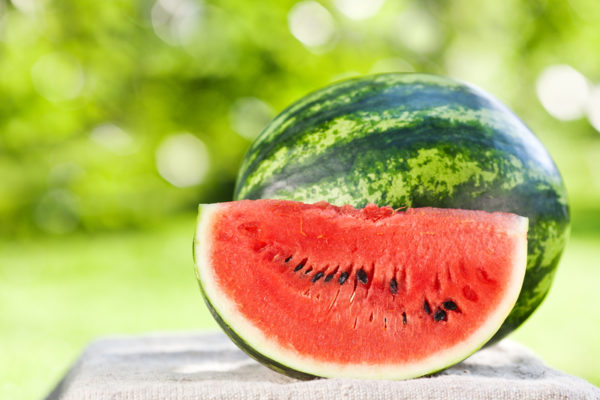
The most popular varieties of watermelon for planting in Russia, Ukraine and Belarus
When choosing varieties of watermelon preference is given to early-ripening and mid-ripening species.Regardless of where you are going to plant melons: in Belarus, Ukraine, Russia, you must choose the type of watermelon that will be suitable and will have time to mature in these climatic conditions.
Pink champagne
The duration of the vegetative period is 80-95 days. The average weight of the fetus reaches 5-7 kg. The flesh is rich pink, juicy with a characteristic sweetness, reminiscent of honey. The skin is dark green with yellow stripes, the thickness is average. The plant is quite unpretentious, well tolerated moisture.
Catherine F1
Vegetative period - 58-62 days, average berry weight is 7-8 kg. A covering material is used to ensure the conditions of rapid maturation. Large leaves and spreading of the stem prevents the root system from sunburn. The hybrid is appreciated due to its high sugar content and dense, but delicate structure of red flesh.
Gift to the North
The fruit ripens in 75-85 days with an average weight of 10-11 kg. The plant does not have a high yield, but fruits steadily. The bright red pulp of the berry is juicy and crunchy with a characteristic watermelon sweetness. The peel has a striped color, the thickness is small. The variety is immune to disease and moisture. The harvest is well preserved and transported.
Nelson F1
The variety belongs to early ripening species, the fruit ripens in just 65 days. The shape of the berry is elongated, striped color with alternating dark green and yellowish tones. On average, watermelon curls 12-14 kg. The red flesh is very juicy and tender with a high sugar content.
Libya F1
From the moment the seedlings are planted, the fruit matures after 62-65 days, which relates it to srednerannymi species. The ten kilogram berry has a round, slightly elongated shape with red flesh and an incredibly sweet taste. The plant is adapted to the climatic conditions of the middle zone. Among other varieties is the leader in yield, marketability and preservation of fruits.
- Catherine F1
- Libya F1
- Nelson F1
- Gift to the North
- Pink champagne
Rules of planting plants in open ground
Before planting seeds for seedlings at home, it is recommended to become familiar with the peculiarities of watermelon cultivation in the open field. This will help to get a good harvest, taking into account climatic factors.
Selection of seeds for planting at home
Seeds should be healthy without signs of damage. Experts recommend giving preference to hybrids that are immune to many diseases, resistant to weather cataclysms, short growing season.
Before sowing, you can slightly germinate the seeds, wrapping them with a damp cloth. After 1-3 of the spout will break through the sprout. The main thing in the process is not to let the napkin dry. Then you can sow them into the soil according to a certain scheme.
Soil preparation for sowing
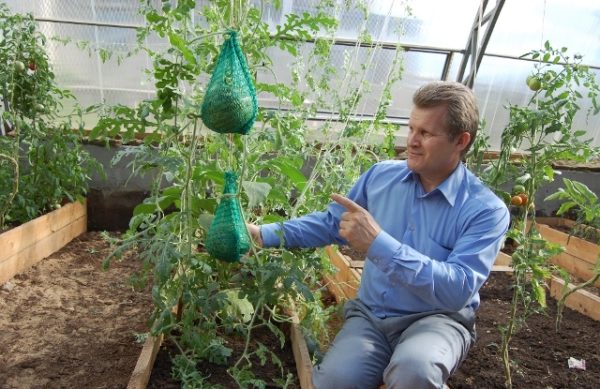
Culture does not tolerate replanting, therefore, the soil must be prepared for subsequent transfer with the germ to the well. To do this, the soil of a loose structure is poured into a pot or other container. Gourd plants grow well in the soil enriched with humus, peat. Therefore, you need to pre-fertilize it. If the density of the earth is large, it should enter the sand, peat. Do not forget about the nutrients: superphosphate, wood ash, etc.
Landing: at what distance from each other to plant seedlings in the ground?
Seeds are planted in open ground not earlier than the 20th of May, when warm weather is established with a temperature regime of + 14 ° C and higher. Seeds are sown on seedlings in the second half of April. In one pot with a diameter of 10 cm with a height of 12-14 cm, 2 seeds are sunk by 3 cm. After germination, a stronger seedling should be left and the other removed. The main conditions for good germination material:
- moderate watering;
- temperature condition + 25-30 °;
- lack of drafts;
- good illumination.
Under favorable conditions, shoots will appear after 6-8 days. Further, the temperature decreases to + 18 ° until the formation of a shoot 4-5 cm. After removing a weak seedling, the regime can be increased to + 25 °.
At the time of transfer to the garden, the shoot should already have at least 4 leaves (30-35 days old). 5-7 days before transplantation, seedlings should be watered less and the temperature should be set to no more than 20 °.
It is better to transplant in the morning, so from the evening the pots should be watered well. It is also desirable to process the shoots with a 1% solution of Bordeaux liquid. The seedling is transferred to the hole with the soil and is deepened to the cotyledon leaves.The interval between bushes is 70-100 cm.
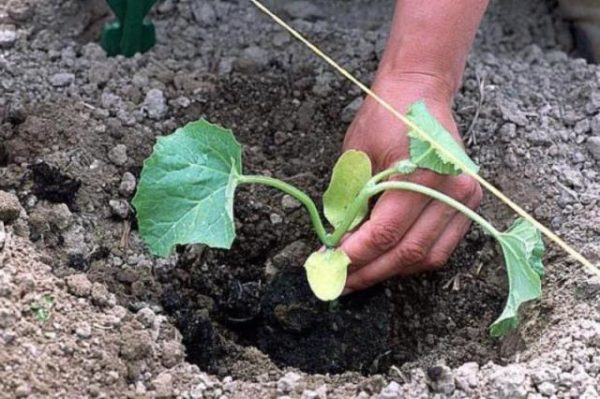
How to care after landing on the site?
Young shoots need protection, therefore, after transplantation the bed is covered with a film. Regularly need to ventilate the shelter to prevent the formation of condensation. You can completely remove the protection in June.
Watering rules
Gourds love moisture, but you should not overdo it with irrigation. It is enough to water the beds 1 time per week. After the opening of female flowers on the plant, the rate of moisture decreases. After the formation of the fruit to carry out irrigation work is not required.
Top dressing and fertilizer for melons
After 12 days, seedlings need to feed the nutrient mixture. based on fermented mullein (10 parts water and 1 part manure). After another couple of weeks, a second feed is added with the addition of superphosphate (50 grams per liter of solution), ammonium sulfate (15 grams), potassium sulfate (30 grams) to the mullein.
Similar bait used for growing seeds in the open field.
Breeding
Culture is propagated with the help of seeds. In nature, this contributes to the round shape of the berries. After over-ripening, it opens and seeds are poured out along with the juice. Careful owners, eating a delicious watermelon, washed in pure water, black grains and dried them. Store at room temperature in a dry room until the next season, and then grown seedling or seedless.
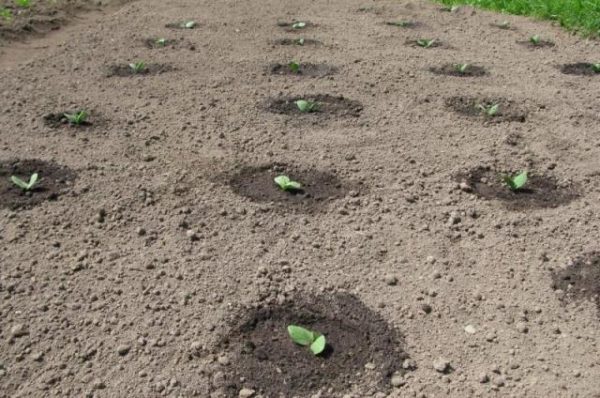
How to grow melon in the garden: the main mistakes
In order not to repeat the mistakes of other gardeners, it is recommended to get acquainted with the most common ones.
- Giving preference to one or another variety, It is worth exploring the term of ripening berries. From the late and late species should be abandoned, no matter what taste they did not have.
- Often the seeds are embedded in dense soil to a great depth .. In such a land, the plant develops poorly. Clay or heavy soil should be diluted with sand and peat to give the structure looseness. You need to sow seeds at a considerable distance from each other.
- You should not choose a plot overgrown with perennial weeds. Burian will score young shoots, not allowing them to stretch and bloom.
- The opinion of some summer residents that a watermelon loves partial shade is considered erroneous. Planting under trees and bushes will not allow the berries to ripen, the culture loves a lot of sun.
- Cultivation of melons without treatments for pests and diseases calls into question obtaining a good harvest.
- Lack of nutrients in the soil reduces the fruiting period and the quality of the berries. Berry necessarily need fertilizing and fertilizer.
Pests and problems of growing watermelons
Culture is subject to the same diseases as cucumbers. It:
- perinospora;
- ascohitoz;
- powdery mildew;
- anthracnose.
During cultivation, the same preventive measures and treatments are used as in the cultivation of pumpkin plants: Ordan, colloidal sulfur, Abiga-Pik, HOM, etc.
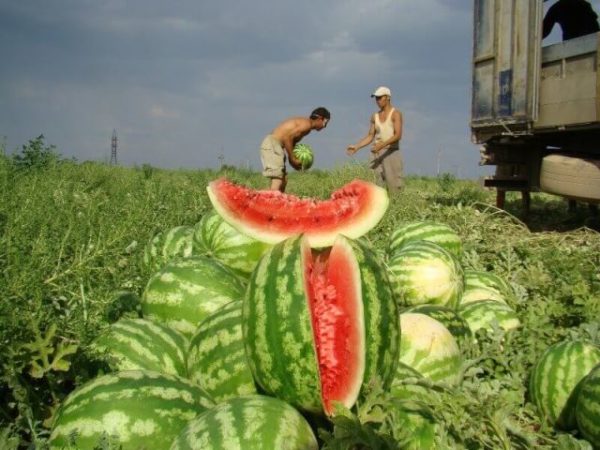
Pests are considered dangerous:
- aphid
- wireworm;
- meadow moth;
- scoops;
- sprout fly.
If you detect the presence of insects or their metabolic products, it is not worth delaying with the treatment, most of the crop may die, or the whole of melon. If biological products do not have the desired effect after application, you should use chemical insecticides: Tantrek, Aktar, Decis, Fufanon.
Proper harvest
To remove the berries from the garden need at a certain time. If you do it later, the watermelon will not be stored for a long time. The gap between the first stage of maturity and full ripeness is only 5 days, so it is important not to miss this period. Properly harvested crop for a long time does not lose the sweetness and elasticity of the pulp.
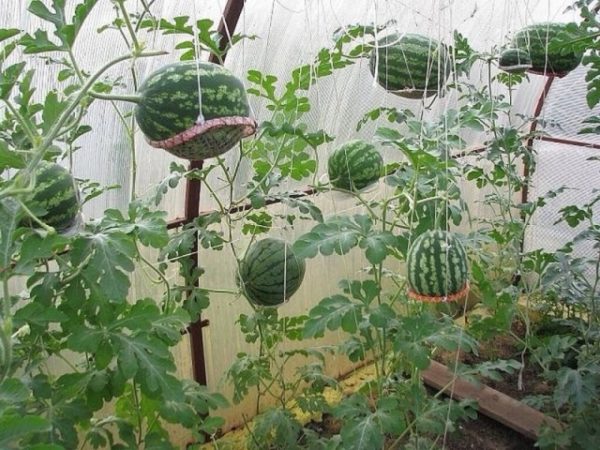
The following signs indicate the ripeness of the fruit:
- drying of the tail;
- formation of a clear pattern on the peel;
- the disappearance of the gray raid;
- the presence of yellow spots on the surface of the berries;
- the smell is reminiscent of freshly cut grass;
- while tapping, a ringing sound is heard.
Approximate terms of fruit ripening can be a clue to the ripeness of a berry:
- early varieties - 32-35 days;
- average varieties - 40-45 days;
- late varieties - 50-53 days.
To grow a tasty juicy berry on your site is quite possible, given all the nuances and rules. Even if you grow watermelons in Khabarovsk or Bashkiria.Watermelon culture, though unpretentious, but still needs attention. Diligence and work will certainly be rewarded with a generous harvest with a record-holder berry.
